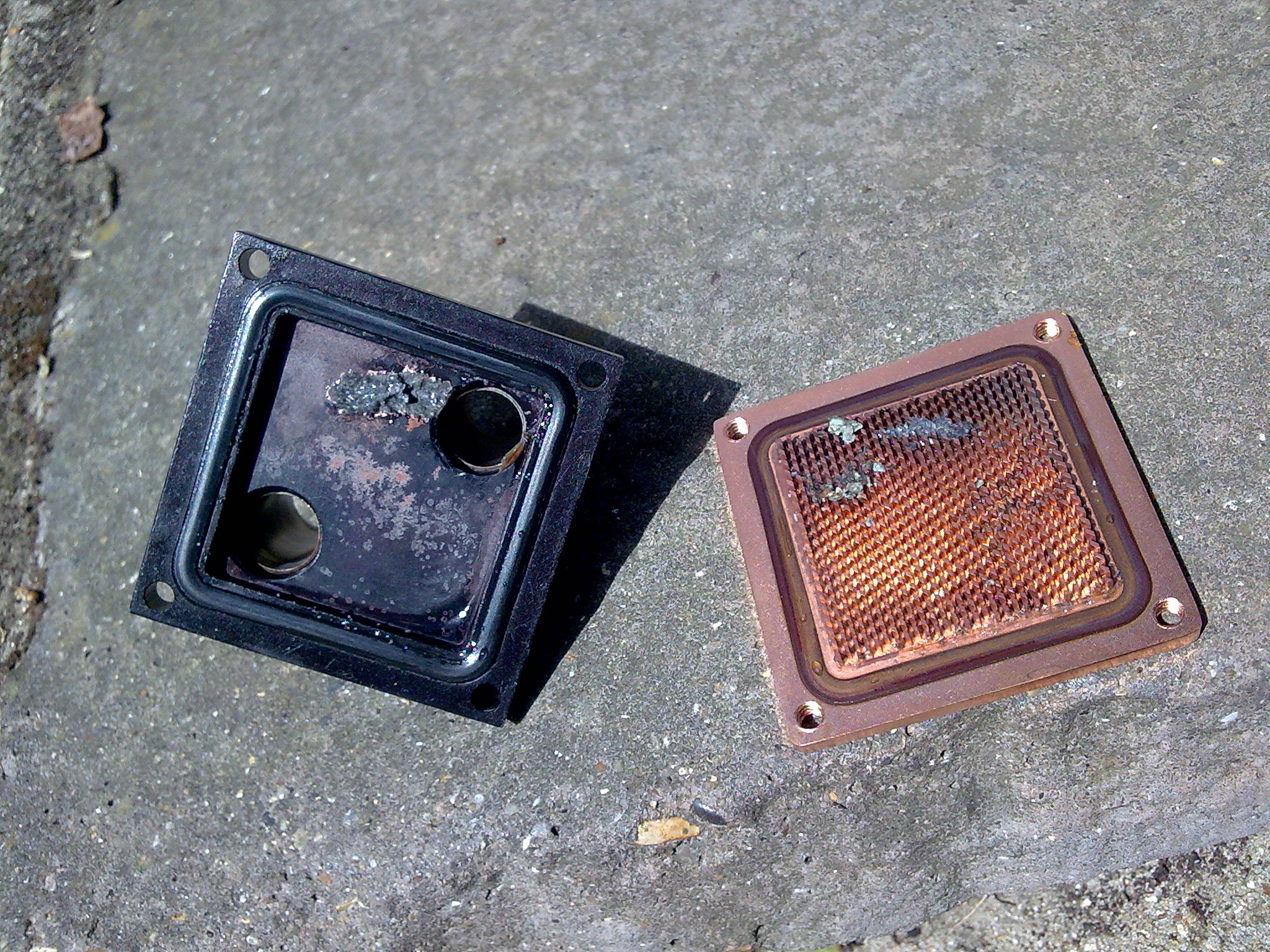Associate
- Joined
- 21 Nov 2006
- Posts
- 285
Hi all
I'm most of the way through assembling, cleaning and testing my first custom water cooling loop. Everything's looking good so far and before anyone asks, it is all name brand copper/brass with mayhems fluid to go in it.
At the moment I'm using a Corsair H100i AIO for my CPU that I've had for nearly five years and never had any problem with. I was surprised to find out that the vast majority (all?) of the major brand AIO cpu coolers like mine (other than the much more expensive ones from specific watercooling brands) use an aluminium radiator with a copper cpu plate. Obviously every newb guide on watercooling screams "don't mix metals" with the occasional picture of the inside of a heavily corroded copper cpu plate, but no real context for the picture. For all we know it could have been run on saltwater.
For anyone that doesn't know galvanic corrosion, think of it like the two ends of a battery. If there is nothing conducting between them, the battery will stay charged. If you put something conductive between them, like a wire or normal water it will conduct and the battery will run out. This electric current is what causes the corrosion. In a water cooling system, the copper is one end and the aluminium is the other.
I have a physics and engineering background, and have seen how small a volume of sacrificial anode is needed to keep an entire ship from falling to pieces. I am also a caver/climber and have seen how much and how quickly corrosion happens to a high purity stainless steel bolt in rock when constantly splashed with seawater and due to run off from vegetation above.
This means the lifespan of all these AIO controllers is controlled by what sort of fluid is put into the system. Clearly big names like Corsair have RnD departments that can ensure a correct mixture is chosen that will outlast it's warranty and ideally the full 6 years it is expected to perform for (in the UK at least).
Has anyone ever taken apart an old 5-6 year old AIO and actually seen any problems inside from the alu/copper mix? I realise their pumps are weaker and aluminium rads are not as good as copper/brass, so there is a good reason to upgrade to a D5 pump with copper rads, but if I was to take mine apart, does anyone really think it would be that bad inside, remembering its 5 years old?
I have changed cpu since buying it so I cannot give any results on its continued performance to be sure that it has not got worse over the years, but my current CPU is a 9700k bought in December which I can run at 5.1GHz with 24hr prime95 stability etc etc etc. The fans do get a touch loud at those levels though.
I'm most of the way through assembling, cleaning and testing my first custom water cooling loop. Everything's looking good so far and before anyone asks, it is all name brand copper/brass with mayhems fluid to go in it.
At the moment I'm using a Corsair H100i AIO for my CPU that I've had for nearly five years and never had any problem with. I was surprised to find out that the vast majority (all?) of the major brand AIO cpu coolers like mine (other than the much more expensive ones from specific watercooling brands) use an aluminium radiator with a copper cpu plate. Obviously every newb guide on watercooling screams "don't mix metals" with the occasional picture of the inside of a heavily corroded copper cpu plate, but no real context for the picture. For all we know it could have been run on saltwater.
For anyone that doesn't know galvanic corrosion, think of it like the two ends of a battery. If there is nothing conducting between them, the battery will stay charged. If you put something conductive between them, like a wire or normal water it will conduct and the battery will run out. This electric current is what causes the corrosion. In a water cooling system, the copper is one end and the aluminium is the other.
I have a physics and engineering background, and have seen how small a volume of sacrificial anode is needed to keep an entire ship from falling to pieces. I am also a caver/climber and have seen how much and how quickly corrosion happens to a high purity stainless steel bolt in rock when constantly splashed with seawater and due to run off from vegetation above.
This means the lifespan of all these AIO controllers is controlled by what sort of fluid is put into the system. Clearly big names like Corsair have RnD departments that can ensure a correct mixture is chosen that will outlast it's warranty and ideally the full 6 years it is expected to perform for (in the UK at least).
Has anyone ever taken apart an old 5-6 year old AIO and actually seen any problems inside from the alu/copper mix? I realise their pumps are weaker and aluminium rads are not as good as copper/brass, so there is a good reason to upgrade to a D5 pump with copper rads, but if I was to take mine apart, does anyone really think it would be that bad inside, remembering its 5 years old?
I have changed cpu since buying it so I cannot give any results on its continued performance to be sure that it has not got worse over the years, but my current CPU is a 9700k bought in December which I can run at 5.1GHz with 24hr prime95 stability etc etc etc. The fans do get a touch loud at those levels though.
Last edited:







